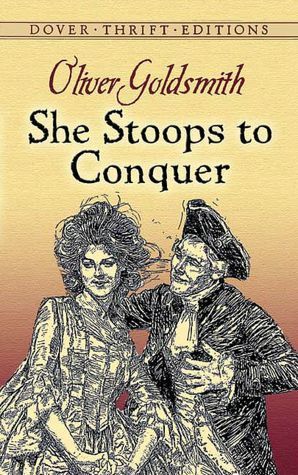ACT THE THIRD.
by“Act the Third” expands the humorous deception while deepening the character dynamics and misunderstandings. Marlow, caught between his polished manners and the false belief that he’s staying at an inn, continues to behave in ways that confound Mr. Hardcastle. What was expected to be a respectful courtship becomes a sequence of comic missteps. Hardcastle, who had been assured by Sir Charles that Marlow was reserved and mannerly, is appalled by the young man’s informal behavior. Each interaction convinces him more that the young suitor is not only rude but totally unsuited for his daughter. Yet, unbeknownst to him, Miss Hardcastle sees another side of Marlow entirely. When Marlow believes he is speaking with a barmaid, his confidence emerges, and he charms her with ease—ironically winning her admiration through mistaken identity. This contrast leads to a comic argument between father and daughter, each defending opposing views of Marlow, and neither realizing both are correct within their limited perceptions.
Tony Lumpkin continues to stir the pot, using his wits not for order but for chaos. His theft of Constance’s jewels, masked as a prank against his mother, serves a dual purpose: aiding his cousin’s secret romance while frustrating Mrs. Hardcastle’s controlling schemes. Tony, while seemingly a fool to his mother, plays the role of trickster with calculated boldness. His casual attitude and clever interference challenge the rigid expectations placed on him by his family. Meanwhile, Constance’s anxiety grows, as she knows the success of her elopement with Hastings depends on retrieving the jewels before her aunt catches on. Mrs. Hardcastle, unaware of the real situation, becomes increasingly frantic over the missing valuables. Her obsession with wealth and appearances blinds her to Tony’s antics, making her a prime target for farce. Goldsmith uses these interwoven plots to highlight how social climbing and parental control often lead to comic failure when met with youthful rebellion and disguise.
Miss Hardcastle, who continues to play the barmaid role, uses this freedom to study Marlow’s behavior more closely. She recognizes that beneath his swagger lies a nervous, respectable man who only becomes himself when class boundaries seem relaxed. This insight sparks her affection, but also strengthens her curiosity. She carefully maintains her disguise, allowing the farce to unfold while shaping it to her advantage. Her goal is not just to be admired, but to be understood on her own terms—not through family fortune, but personality and presence. Marlow, unaware of her identity, feels a rare freedom to express his admiration. This dynamic sets up the possibility for genuine connection, even as it remains shrouded in confusion. Miss Hardcastle’s clever manipulation of the situation positions her as more than a passive romantic interest—she is the play’s most strategic character, navigating gender roles and class expectations with precision.
As the act moves forward, the misunderstandings become more entangled, creating multiple layers of irony. Hardcastle contemplates whether he should ask Marlow to leave, disgusted by what he perceives as impertinence and lack of breeding. At the same time, Miss Hardcastle finds herself more attracted to Marlow’s unfiltered side, which only emerges under the mistaken belief that she is of lower status. This irony—of identity, behavior, and expectation—sits at the heart of the play’s satire. Goldsmith continues to challenge the era’s rigid views on class and romance by showing how love flourishes when social masks are lowered. The structure of the comedy rests on this tension: when people stop acting according to the rules of society, they begin to reveal who they truly are. Yet, because they do so under mistaken assumptions, the truth becomes harder to recognize.
Marlow’s behavior straddles the line between endearing and foolish, as he confesses admiration to the woman he thinks is beneath his social station. This creates a compelling tension between desire and decorum. His charm appears only when he feels no pressure to impress, which ironically allows Miss Hardcastle to see the person hidden behind the formal exterior. Goldsmith’s clever use of inversion—where a man shows his best self in his worst moment—questions the sincerity of class-based values. Marlow, too, begins to sense that he is being drawn into deeper emotional territory, though he cannot yet name it. He enjoys speaking with the barmaid but begins to experience confusion as those feelings deepen. This emotional conflict mirrors the audience’s growing anticipation for the truth to emerge.
As the act concludes, the web of deceit remains tightly spun, promising more revelations and laughter. Hardcastle’s frustration, Miss Hardcastle’s game, and Tony’s interference all push the characters closer to the play’s climax. The act closes with every relationship stretched to the brink of discovery. Hastings and Constance remain hopeful yet uneasy. Marlow feels something changing but doesn’t yet understand it. Miss Hardcastle, full of insight and control, prepares to guide the next phase of the story. Goldsmith, through this act, masterfully blends social satire with emotional truth, ensuring that the comedy’s punchline will be just as satisfying as its buildup. Each character stands on the edge of discovery, not just about one another—but about themselves.

